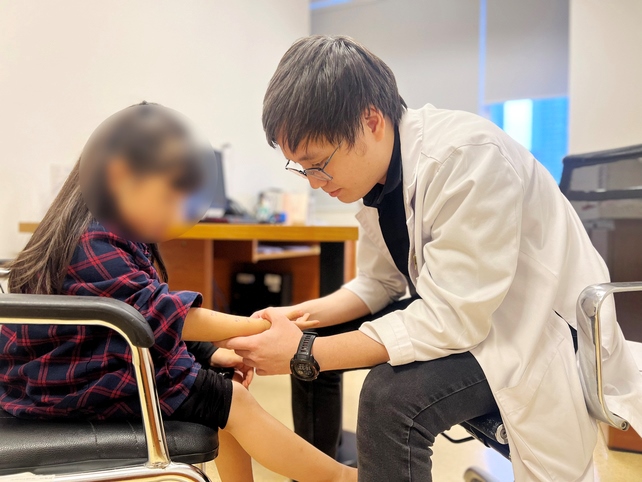Incorrect surgical indications cause serious consequences for children
A 14-year-old girl was brought to Vinmec Times City International General Hospital (Hanoi) for examination with an abnormal and unbalanced gait, although she did not feel any pain. The doctor initially suspected that the girl had a leg length difference.
However, the results of the panoramic X-ray and limb length measurement showed an insignificant difference (less than 10mm). At the same time, the spinal examination also did not detect any abnormal signs that could cause the above condition.
Through discussions with relatives, the doctor learned that the family had previously taken the child to another hospital for examination when they noticed that the child could not squat. Here, the child was diagnosed with Achilles tendon contracture and was prescribed surgery to lengthen the tendon to improve mobility.
However, after surgery, the patient's condition not only did not improve but also became more serious. The unbalanced gait made it difficult for the child to perform daily activities. The family continued to take the child for follow-up examinations and received a diagnosis of flat feet, requiring orthopedic shoes. Disagreeing with this conclusion, the family decided to go to Vinmec Times City Hospital for in-depth assessment and treatment.
According to MSc. Dr. Ho Ngoc Minh - Director of Motion Lab Operations and Surgeon of Arthroscopy and Sports Medicine, Vinmec Times City Hospital, Achilles tendon lengthening surgery should only be applied in cases with clear evidence of true Achilles tendon contracture. This condition is common in neuromuscular diseases, such as cerebral palsy, or when the patient does not respond to non-surgical methods such as exercise, casting or orthotics.
“If surgery is not performed without meeting these conditions, the patient will face a high risk of serious complications, severely affecting their ability to move,” Dr. Minh emphasized.

The doctor also said that when surgery is performed incorrectly, the complications that result are often very difficult to overcome. Subsequent surgical interventions are almost impossible to completely restore the patient's motor function. A typical case is the case of the girl above, the consequences of incorrect diagnosis and treatment made her gait more distorted and uncomfortable.
Real cause: Due to habits and lifestyle
Nowadays, squatting is no longer a common habit, especially among the younger generation. In the past, previous generations often performed this movement in daily activities, especially when using old-fashioned toilets (squat toilets). Repeating the movement from a young age helps the ankles adapt to a large flexion amplitude, which can reach 60 degrees.
In Gen Z and the next generation, the habit of squatting gradually disappears due to changes in lifestyle, such as not using squat toilets or sitting less low, causing many people to have poor ankle flexion, with an amplitude of less than 15 degrees.
Children are more likely to flex their ankles, but puberty reduces this ability due to rapid growth and tight Achilles tendons. Weight and balance also affect squatting.
“If the child can still walk, run and play sports normally, not being able to squat is not a serious problem. In the absence of structural abnormalities in the ankle area, exercise is a safe and effective solution to improve squatting ability, instead of having to undergo surgery,” said Dr. Minh.
The doctor also emphasized that families need to consult with many different experts to have a comprehensive view of their child's abnormal condition, thereby making accurate medical intervention decisions, avoiding unfortunate mistakes.
Early detection and intervention of lower limb abnormalities in children
Abnormalities in the lower limbs such as X-shaped legs, O-shaped legs, flat feet, high arches, inversion feet, exversion feet, club feet, etc. can seriously affect mobility, gait, increase the risk of injury and reduce quality of life. Early and accurate detection of these abnormalities is very important for timely treatment or intervention.
Currently, Vinmec Sports Medicine uses advanced motion and imaging analysis technology, providing a screening package for lower limb movement abnormalities in children with leading experts in pediatric orthopedics and the first and only international standard measurement tools in Vietnam, helping to diagnose these abnormalities early and accurately.











